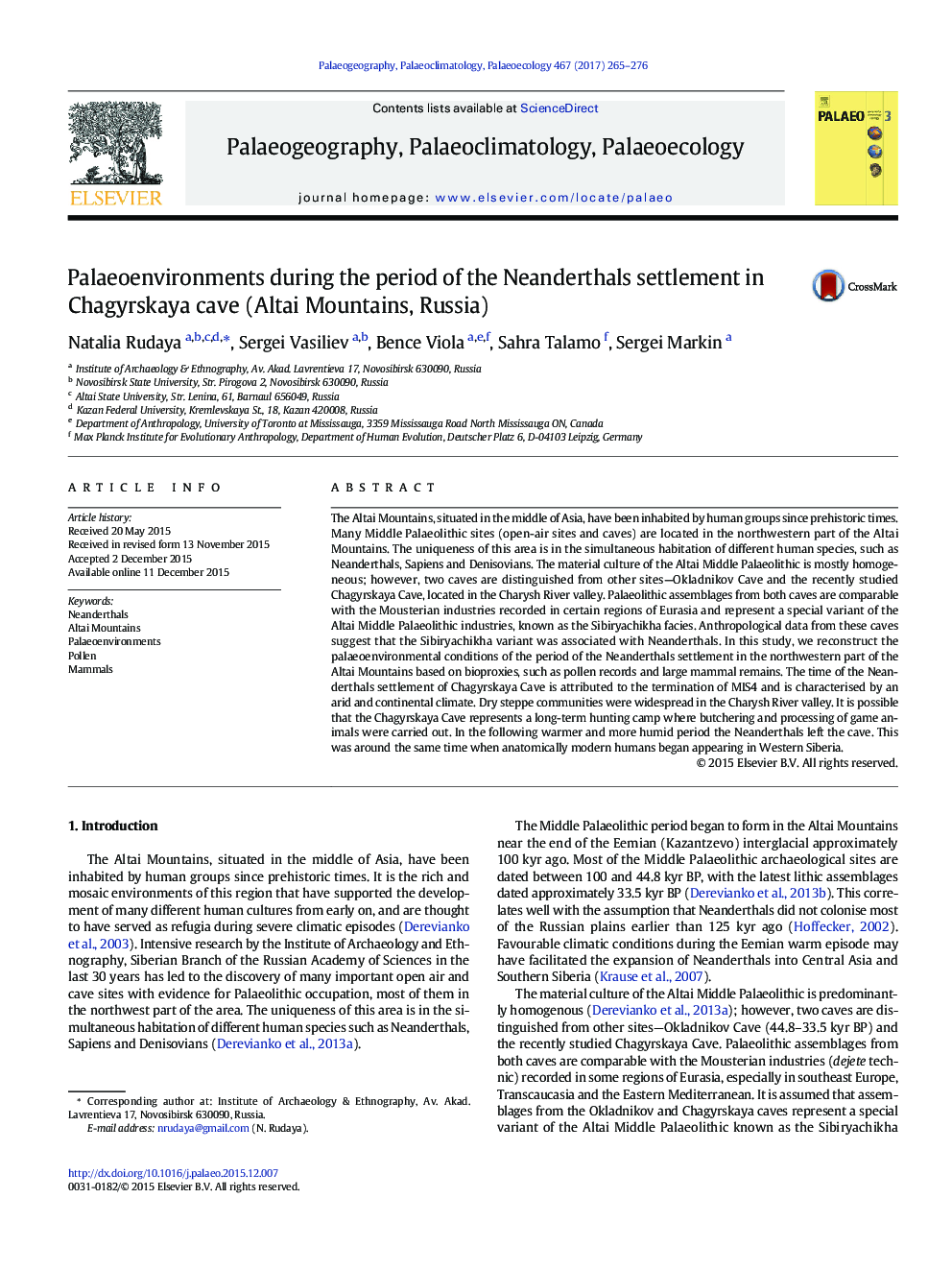| کد مقاله | کد نشریه | سال انتشار | مقاله انگلیسی | نسخه تمام متن |
|---|---|---|---|---|
| 5755987 | 1622125 | 2017 | 12 صفحه PDF | دانلود رایگان |

- Neanderthals settlement of Chagyrskaya Cave is attributed to the termination of MIS4.
- This period is characterised by an arid and continental climate.
- Vegetation was represented by dry steppe communities.
- Mammal composition reflects the spread of steppe landscapes developed during an arid climate.
The Altai Mountains, situated in the middle of Asia, have been inhabited by human groups since prehistoric times. Many Middle Palaeolithic sites (open-air sites and caves) are located in the northwestern part of the Altai Mountains. The uniqueness of this area is in the simultaneous habitation of different human species, such as Neanderthals, Sapiens and Denisovians. The material culture of the Altai Middle Palaeolithic is mostly homogeneous; however, two caves are distinguished from other sites-Okladnikov Cave and the recently studied Chagyrskaya Cave, located in the Charysh River valley. Palaeolithic assemblages from both caves are comparable with the Mousterian industries recorded in certain regions of Eurasia and represent a special variant of the Altai Middle Palaeolithic industries, known as the Sibiryachikha facies. Anthropological data from these caves suggest that the Sibiryachikha variant was associated with Neanderthals. In this study, we reconstruct the palaeoenvironmental conditions of the period of the Neanderthals settlement in the northwestern part of the Altai Mountains based on bioproxies, such as pollen records and large mammal remains. The time of the Neanderthals settlement of Chagyrskaya Cave is attributed to the termination of MIS4 and is characterised by an arid and continental climate. Dry steppe communities were widespread in the Charysh River valley. It is possible that the Chagyrskaya Cave represents a long-term hunting camp where butchering and processing of game animals were carried out. In the following warmer and more humid period the Neanderthals left the cave. This was around the same time when anatomically modern humans began appearing in Western Siberia.
Journal: Palaeogeography, Palaeoclimatology, Palaeoecology - Volume 467, 1 February 2017, Pages 265-276